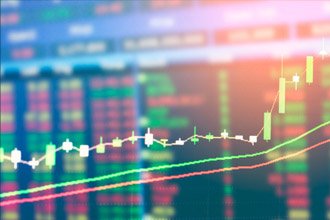Earlier this week, I named the one ordinary stock Wall Street insiders use as their own private "cash cow" - while they shunt their clients' money off into subpar performers.
Now, I said at the time that I was out to blow the lid off Wall Street, and I meant it. I also said I wasn't done calling out the shady practices they try and pass off as "convenient" for their clients.
Take commission-free trades. They're all the rage these days, but they're not quite what they seem.
In reality, they're a way for brokers to impose a stiff backdoor tax on people. The take is so large that they can offer you free trading, no sweat. If it sounds dirty, it's because it is dirty. This is a side to the brokerage business that's as corrupt as it gets.
Now, you might be thinking, "So what - I'm getting cheap-as-free trades, who cares if Wall Street takes a little bite?"
Well, that "bite" is, unequivocally, absolutely, 100% your money. It's coming out of your pocket. I'll show you in a minute, those bites keep adding up until they've eaten your lunch.
The good news is there are three very simple steps you can take - on any brokerage platform - to avoid this and keep what's yours.
Here's How Wall Street's Bribe Racket Works
"Commission-free trades" were once a novelty, but they quickly caught on in a kind of "race to zero," where brokerage houses from one end of the Street to the other were falling all over themselves to offer these "free" trades to millions and millions of customers.
It wasn't out of the goodness of their hearts, or some wish to see the "little guy" even the odds.
No, they saw dollar signs... always the dollar signs.

Options Trading Guide
There's a surprising secret that separates trading masters from the folks fighting over Wall Street's table scraps.

Options Trading Guide
There's a surprising secret that separates trading masters from the folks fighting over Wall Street's table scraps.
The racket is called "payment for order flow," or PFOF; it now dominates the online brokerage business and is the main impetus behind commission-free trades.
Here's how it works in the big system:
- You send your order to the broker.
- The broker gives a market-making firm a first look at it.
- If the market-making firm wants it, they trade it and then print it on an exchange.
- If they don't want it, they take the order and place it on an exchange until they (or someone else) decides to fill it. (This usually happens on limit orders away from the market.)
- The exchange they put it on pays the firm a "maker/taker" fee to place the order there.
- The person who executes the trade actually has to pay to fill it.
- When the order trades, the market-making firm collects $0.25 per 100 shares.
- The trader that actually executed the trade pays $0.35 per 100 shares.
Here's an example of how it might work in a real-world scenario.
Let's say you're trying to sell a stock at $15. In reality, your actual offer is $15.0035.
That doesn't look like a big difference. But in the stock and options business, it's huge. $0.0035 is more than a firm is making on average per-stock trade, and it's about on par with the profit and loss of each option trade a market-making firm executes.
The price you're seeing, as the seller, is actually the worst price. You're looking at $15 - but the buyer has to pay the "take fee" of $0.0035. Then, when your sale finally trades, the stock immediately goes to $15.01 or $15.05 - because your offer wasn't $15. It was $15.0035.
So even if the stock trades at $15, you don't get filled. Not until it hits your actual offer.
And either way, you just lost money. And that's the standard practice of payment for order flow.
Brokers will promise you "best execution." But what is the best execution on a market order?
Take a look...
How Your Order Is Carried Out
ABC stock has a bid of $25.05 and an offer of $25.20. That means your fill could be anywhere between those two numbers. That sounds wide, but you would be surprised by how many stocks outside of the 100 most active have $0.10- to $0.25-wide markets.
If you send a market order to buy ABC stock and the market maker fills it at $25.19, that's still technically best execution... even though a $25.05 price was available.
From my own years of market-making, I am 100% certain that on a $0.15-wide market in just about any stock, it would fill at least $0.05 better than the offer - if not closer to the mid-price.
So how can this be classified as best execution? Well, simple: Because the brokers wrote the rules.

One-of-a-Kind Trading System
Hundreds of documented stories prove this strategy works - find out how you can turn any market condition into profits.

One-of-a-Kind Trading System
Hundreds of documented stories prove this strategy works - find out how you can turn any market condition into profits.
Your "free" order isn't free. It actually costs you much more than what you were paying in commissions before.
And here, again, you might think, "Hey, I don't trade that much, it's worth the free commissions." But think about this: If you do $0.05 worse on 1,000 shares of stock per week, for all intents and purposes, you're paying $2,600 a year for your "free" commissions.
Try this, if you can: Dig up an old brokerage statement from 2012 or so, and check your fees. I can guarantee you didn't pay that much before.
The good news is you don't have to take it lying down.
How to Keep Wall Street's Hands Out of Your Pocket
There's more good news: It's remarkably simple to take these steps and keep more of your hard-earned profits.
No. 1: Never use market orders.
When you place an order to buy a stock at market, you aren't setting a specific price. That means the stock could move in the time you place the order and the time the order is filled, giving you a bad price. And market makers love to drop the price of the bid before filling the stock, especially on illiquid shares.
Instead, always use limit orders. This is an order to buy or sell at a specified price. Even if you want the order right away, this is the best way to ensure you're getting in at exactly the price you want.
That way, market makers can't "move the market" on you as much as they might want.
No. 2: Learn to "work" an order.
You should never trade in a hurry. If you're putting your money on the line, then make sure you have the time to do it. That way, you can really learn how to work your order.
For starters, I wouldn't use a "smart router." This is what your broker uses to send your order to the market. But it's only "smart" for the broker, not the buyer - because it helps them collect the most fees.
The smart router allegedly optimizes the route your order takes to get you the best fill. But in reality, they optimize your order to the broker's benefit so that they can maximize their PFOF haul.
Instead, route your order to the NYSE or the NASDAQ. Not all brokers allow you to do this - but if they do, there will be a drop-down menu that allows you to select "best" instead of "smart" when choosing your route or exchange.
This way, your order essentially hits the "open market," and you have more traders looking at your stock or option trade - not just one market maker getting the first free look and routing you to a "maker/taker exchange."
No. 3: Walk your order up.
If you want to buy a stock with a wide spread - like our ABC example - then start by putting your bid below the mid-price. Say the spread is $25.05-$25.20. You'll want your initial bid to be something like $25.10 - that's your limit price.
If it doesn't fill after a few seconds, then you need to start "walking it up."
You can move your bid to $25.12, then to $25.14, then to $25.16. If the market doesn't move drastically, you will most likely get filled using this technique.
If not, you can pay the offer. But even if you do that, you will probably see price improvement. Traders want that wide offer, and they - just like the market maker - will improve the price.
Once you're aware of what's happening with "commission-free trades"- and how to guard against it - you can see all kinds of benefits to mobile apps and the tens of millions of new investors that have poured into the markets over the past 13 months or so.
For instance, a lot of these folks are loose cannons, speculating with little or no regard for risk. By doing that, they're generating absolutely insane levels of volatility - around $672 million floods into the market every minute of every trading day.
That can be bad news for inexperienced speculators, but with the right experience and strategy, those surges can be turned into potential moneymaking events. My new friend and colleague, Tom Gentile, did some backtesting on these "surges" recently. Know what he found? Opportunities for 300% in three days... 471% in 19 days... even 650% in eight days! You can go here and take a look for yourself how Tom was able to score such massive returns with this phenomenon. He's got a plan to keep the profit potential rolling, too.
Follow Money Morning on Facebook and Twitter.
About the Author



